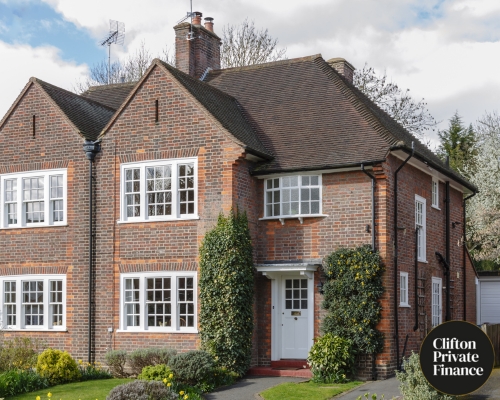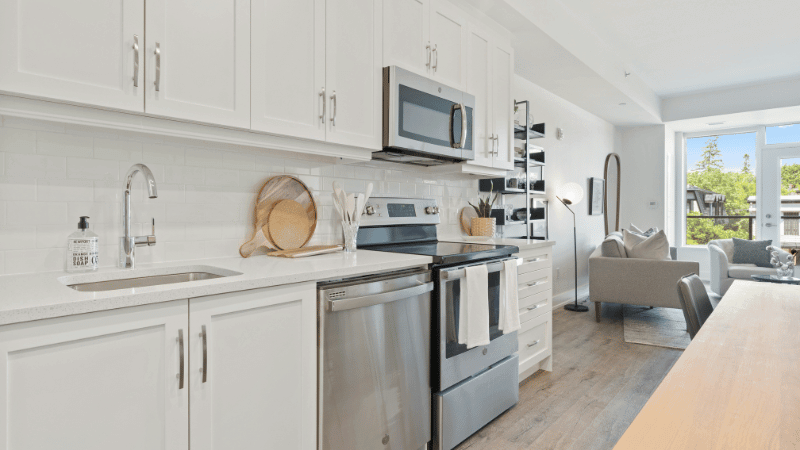Categories
Mortgages For Multi-Unit Properties

You've got the chance to buy a residential building as a rental property. Do you renovate and let it as one big house-share, or divide it into separate flats? And what are your finance options?
- The buy-to-let (BTL) property finance industry does love initialisms, so we'll deal with the definitions first.
- Then we'll compare at the profitability of both types of large-property use.
- We'll look at some of the additional advantages of MUFBs.
- And then we'll look at the finance implications.
1 What are HMOs and MUFBs?
Houses in Multiple Occupation (HMOs) are usually like student house-share arrangements:
- At least three tenants share kitchen and bathroom facilities but they’re not one "household" or family group.
- They usually each have an assured shorthold tenancy agreement (AST) with the landlord, and individual tenants can come and go without affecting the tenancies of the other residents in the property.
A large HMO (LHMO) is a similar set-up, but bigger:
- Five or more unrelated tenants sharing facilities on the same basis.
- LHMOs usually have to be licensed by their local council because of the impact on council services (rubbish collection, parking...) and neighbouring properties (noise, anti-social behaviour, possible effect on neighbouring property values...)
A Multi-Unit Freehold Block (MUFB), or "multi-unit property" is defined by the fact that the separate units are self-contained, but all owned on a single freehold title. Each unit has its own kitchen and bathroom facilities, though the tenants may share hallways and a garden.

An MUFB might be:
- An older building originally designed as separate self-contained flats, owned by one landlord on a single title.
- A large house later subdivided into flats, studios or bedsits.
- A terrace of houses.
- A modern purpose-built apartment block.
2 The profitability of HMOs and MUFBs
What both types of multi-tenant properties promise is greater profitability compared with single-household lets, or a couple of tenants jointly leasing a property.
- More tenants in a property provide a buffer against the enemy of landlord profitability: rental voids.
- There may be a faster turnover amongst HMO tenants compared with a more settled single-unit household.
- Less committed tenants may be less likely to take care of a property, increasing maintenance and refurbishment costs.
- Nonetheless, the profitability figures for HMOs have been consistently better than for standard buy to lets, with investment returns at least one-third higher.
The two types of uses of larger properties have been competing for top spot in the profitabililty rankings.

According to the Buy To Let Index from Mortgages for Business, from 2014 MUFBs edged ahead of HMOs, showing their highest-ever gross yield for UK landlords: 9.3% (compared with 9% for HMOs).
Research in spring 2018 (for one of the biggest specialist lenders in the market) showed that rental yields for both types of these larger rental properties were top performers in a market that was dipping slightly.
- Average rental yields for HMOs were highest across all types of property: at 7.1%
- Yields for multi-unit freehold blocks were second highest: at 6%
- Average yields for all property types was 5.8%
3 Additional advantages of multi-unit properties
1 Possibly more appropriate conversion of a large house
The demand for different types of rental property is highly localised, and wise property investors have a good understanding of the demand in each area: HMOs near universities and training hospitals, individual rental units in more settled, affluent suburbs.
Experienced landlords will also be sure to find out what the local council favours, and is likely to grant planning permission for.
A substantial terrace or freestanding house may lend itself more naturally to subdivision into separate flats, which could mean cheaper subdivision costs and the property retaining its value.

2 No need for HMO licensing
You will need planning permission to subdivide an existing property into flats, but you won’t need an HMO licence to operate the tenancies.
3 More flexible and affordable financing
The simplicity of renting out separate units attracts more mainstream property lenders, offering more flexible terms, better rates and more favourable set-up costs than HMO mortgages.
Fees and rates for multi-unit mortgages tend to be slightly better than for HMO mortgages, reflecting the greater security for the lender: if necessary the units can be sold separately to recoup the lending.
Finance for properties with up to 4 separate units is generally quite straightforward to secure at up to 75% LTV.
The field of lenders for larger properties, with more units, is more restricted. And for properties with more than 10 units there are only a very few lenders who are willing to offer finance.
Their concern is the necessity of finding multiple buyers at the same time in the case of a foreclosure, and the possibility that building works might be necessary to combine some of the units into larger flats to attract a wider range of buyers.
Their caution is often reflected lower LTVs - closer to the 60% mark. Though the specialist lenders we work with usually take a more flexible, entrepreneurial approach.
4 Option to sell off individual units as leasehold properties at a later date
Most multi-unit mortgage lenders are happy to consider lending on a number of units on a single freehold lease even when there are separate leasehold units within the same building.
And they are equally wiling to allow you to grant a leasehold to one of your own units and sell it off at a later date – giving you much more flexibility with your investment at a time when larger properties may be slower to sell.
Contact us to arrange your finance
Multi-unit properties are an interesting, and profitable, property investment option, and the right mortgage package will maximise your returns. Call Clifton Private Finance to arrange a convenient time to discuss your plans:
















